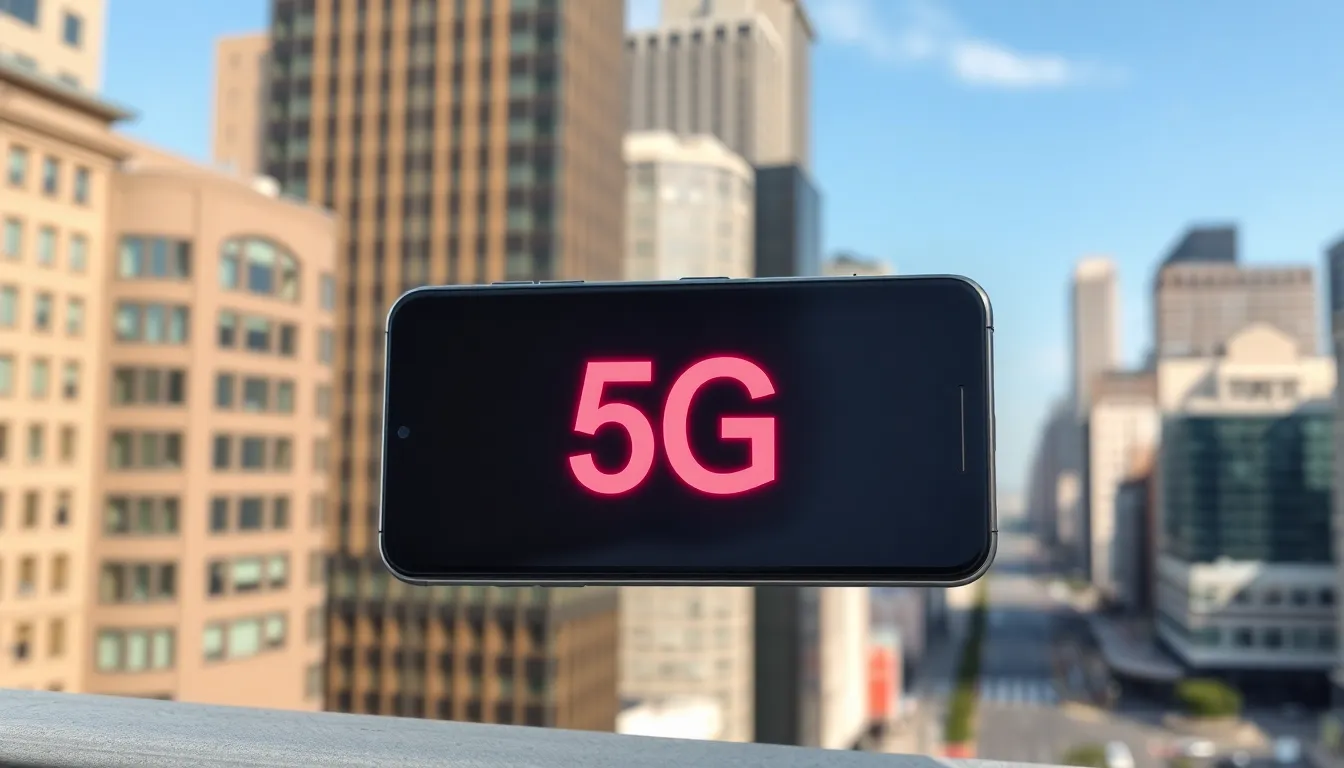In a world where technology evolves faster than a cat video goes viral, the iPhone X might seem like a relic from the past. Launched in 2017, this sleek device captured hearts and wallets alike, but does it keep up with today’s lightning-fast 5G networks? Spoiler alert: it doesn’t.
While the iPhone X dazzles with its stunning display and impressive camera, it’s not equipped to handle the 5G revolution. Instead, it’s stuck in the 4G lane, cruising along at a respectable speed but missing out on the turbocharged experience that 5G promises. So, if you’re dreaming of downloading movies in seconds and streaming in ultra-high definition, it might be time to consider an upgrade. The future is calling, and it’s got a much faster phone on the line.
Table of Contents
ToggleOverview of the iPhone X
The iPhone X, released in 2017, remains a notable device despite the rapid evolution of technology. Known for its high-quality display and excellent camera, it lacks support for 5G networks, making it limited to 4G capabilities.
Key Features
Innovative features include a 5.8-inch Super Retina display, providing vibrant colors and deep blacks. Face ID technology enables secure unlocking using facial recognition. Dual 12 MP rear cameras enhance photography, allowing for stunning depth effects. Built-in wireless charging adds convenience, while iOS updates provide continued software support.
Specifications
The iPhone X operates on the A11 Bionic chip, ensuring smooth performance. Battery life accommodates up to 21 hours of talk time or up to 13 hours of internet use. Storage options include 64 GB and 256 GB, catering to various user needs. Weighing 174 grams, it maintains a premium feel with its glass and stainless-steel design.
Understanding 5G Technology

5G technology represents the fifth generation of mobile networks, promising faster speeds and lower latency compared to previous generations. This advanced network facilitates smoother video streaming, enhanced online gaming, and improved device connectivity.
What Is 5G?
5G stands for fifth generation. This technology focuses on providing ultra-fast wireless communication. Improved bandwidth allows for more devices to connect simultaneously without a reduction in performance. It supports features like augmented reality and high-definition video. Latency, or the delay in data transmission, significantly decreases, giving users a more responsive experience.
Differences Between 4G and 5G
4G technology primarily revolutionized mobile internet with faster speeds than 3G. However, 5G significantly surpasses its predecessor in terms of speed, reaching up to 10 Gbps under ideal conditions. Enhanced capacity of 5G networks accommodates many devices at once, making it ideal for crowded areas. Latency in 5G can drop to as low as 1 millisecond, while 4G typically ranges between 30 to 50 milliseconds. Applications such as smart cities and IoT devices thrive on 5G’s capabilities, offering more innovative solutions.
iPhone X Connectivity Capabilities
The iPhone X falls short of modern connectivity standards, offering robust 4G LTE support but lacking 5G capabilities. It supports band frequencies that ensure reliable connections for browsing and streaming. Most users experience solid download speeds, typically reaching up to 300 Mbps on 4G LTE networks. Despite this solid performance, it cannot compete with newer 5G devices that significantly outperform in speed and efficiency.
4G LTE Support
4G LTE provides a reliable cellular connection for iPhone X users. It enables smooth video streaming and online gaming through high-speed data transfer. Many users find that the download speeds enhance their daily activities, whether browsing social media or streaming movies. Phone calls and messaging work seamlessly due to stable connectivity. In urban areas with strong 4G coverage, users experience fewer interruptions, benefiting both personal and professional use.
Limitations of iPhone X
Lack of 5G support restricts the iPhone X in today’s fast-evolving tech environment. Users seeking ultra-fast download speeds and lower latency for enhanced applications face limitations. Current 5G devices offer speeds that can exceed 10 Gbps, which iPhone X cannot match. Additionally, emerging technologies, like smart cities and IoT devices, thrive on 5G, making the iPhone X less future-proof. Without upgrades, users may miss out on the latest connectivity innovations essential for modern use.
What Does This Mean for Users?
The absence of 5G connectivity in the iPhone X affects user experiences significantly. Users seeking rapid download speeds may encounter limitations with current and emerging applications. Streaming services, online gaming, or any demanding tasks benefit from 5G’s capabilities. A lack of this technology restricts the iPhone X’s utility in a 5G-enabled world, impacting overall satisfaction. Users relying on advanced features in future devices will find themselves at a disadvantage when using the iPhone X.
Implications of Lacking 5G
Limited connectivity hampers the iPhone X’s performance in today’s technology landscape. Users accustomed to 5G networks find that the device’s 4G LTE support lacks the speed and efficiency needed for seamless operations. Streaming high-definition content might encounter buffering, and gaming may experience latency issues. Users eager for instant downloads or uninterrupted video calls may feel frustrated with 4G speeds. The increasing reliance on bandwidth-intensive applications reveals a growing gap in performance for the iPhone X.
Alternatives for iPhone X Users
Users looking for an upgrade can consider various models that support 5G. The iPhone 12 and newer versions offer enhanced speed and lower latency, perfect for multitasking. Models such as the iPhone 13 and iPhone 14 not only provide 5G but also feature significant improvements in camera technology and battery life. For those not ready to upgrade, utilizing Wi-Fi networks can enhance speed for streaming and gaming. Third-party apps or services may optimize device performance temporarily, but a new device provides a longer-lasting solution for 5G needs.
The iPhone X, while a remarkable device for its time, doesn’t support 5G technology. Users looking for faster speeds and improved performance in today’s digital landscape may find it lacking. As 5G becomes increasingly prevalent, relying on a device limited to 4G could hinder the overall user experience.
For those who prioritize speed and connectivity, upgrading to a newer model is essential. Devices like the iPhone 12 and beyond offer the necessary 5G capabilities, ensuring users can fully enjoy the benefits of modern mobile networks. While the iPhone X remains a solid option for basic tasks, its limitations in 5G compatibility may prompt users to consider an upgrade sooner rather than later.



